About
Research and Innovation
Our long-term commitment to R&D has been one of our success factors.
Our annual R&D budget is significant. Research projects include vibration and dynamic modeling, acoustic (pulsation) simulation, post-processing analysis software, service methodologies, and products that control vibration. As a result of new innovations (see below), our clients benefit from novel solutions, more accurate recommendations, and faster results.
Contents [ hide ]
1 Industry-Sponsored Research
We have been involved in several research projects on behalf of the Gas Machinery Research Council (GMRC).
Current Research Projects
- Baseline Testing Provides Opportunities for Continuous Improvement Presentation (PDF)
- Mechanical Analysis and Testing for Performance Augmentation Networks (PAN) Presentation (PDF)
- Predicting Power Loss in Compressor Manifolds (Phase 2) Presentation (PDF)
- Pipe Support Stiffness Assumptions (for Pipe Stress Analysis and Vibration) Read more
- Root Cause of Piping Failures Presentation (PDF)
Completed Research Projects
-
Best Practices for Specifying & Procuring a Successful High-Speed Compressor Package Presentation (PDF)
See the GMRC website for more information.
2 Wood-Sponsored Research
Wood (formerly BETA) funded and managed (in-house) research projects include:
- Small-Bore Connections (Branch Connections) – Field vibration and stress testing for gas and liquid systems; design approaches for small-bore piping subject to vibratory loads.
- Mechanical/Acoustical Analysis (Pulsation Analysis) – FEA modeling and field-based research to develop extensive knowledge base and library for stiffness, damping, acoustic modeling, performance modeling, forced response predictions, field troubleshooting, and other related topics. Results were used to enhance BETA’s MAPAK software simulation package and field testing methodologies.
- Torsional Vibration – Field and simulation modeling of torsional vibration, including accurate field calibrated design software.
- Structural and Foundation Dynamics – Field based testing on land based foundations and offshore production platforms (and FPSOs), used to enhance Wood's dynamic modeling software.
- Piping Vibration – Field and design testing on piping support, restraint design, vibration absorbers, FIV analysis, and other related piping vibration issues.
3 Mechanical Acoustical Package (MAPAK) Simulation Software Suite
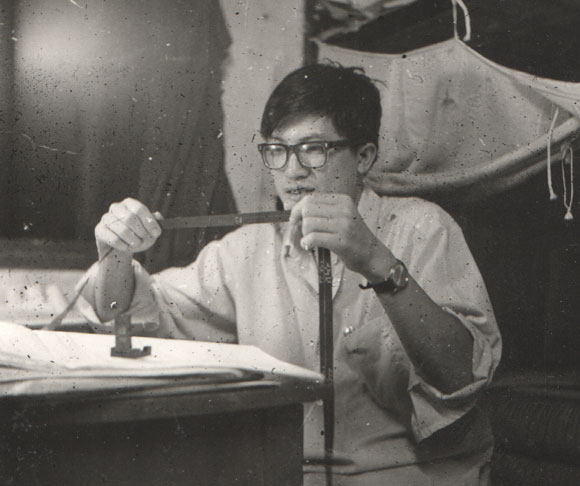 |
| Simulation software development in the 1970s. The source code for each simulation was punched on soft tape (therefore the term "software"), the tape was then fed through the computer and output to a dot-matrix printer. |
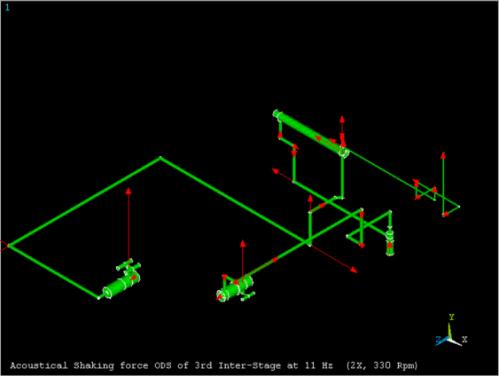 |
| Acoustical shaking forces simulated by MAPAK |
_small.jpg) |
|
Bottle shaking forces |
Wood (BETA) led the industry in vibration analysis and pulsation control in piping systems and developed North America’s first digital simulation program (1973). After continual enhancements, a major upgrade to pulsation analysis was introduced to the industry (1998) using our non-linear Time Domain algorithm.
The Time Domain Solver™ software tool is used in pulsation (acoustic) analysis, transient fluid flow, torsional analysis, and mechanical vibration analysis. This proprietary software package offers more accurate analysis when compared to commercially available programs. Read more
Some of the features of this program include:
- Analysis of unlimited number of nodes and operating conditions
- Accurate static and total power losses in dynamic fluid systems
- Superior accuracy at high frequency
- Expanded meter error analysis
- Refined compressor bottle sizing programs
- Increased accuracy for high-pressure gas, low compression ratio, or large cylinder bore systems
In 2007, Wood introduced the first DataMinerTM post processing tool to help improve the analysis and evaluation of pulsations, forces and vibration across the entire operating envelope and piping system. Many new enhancements are introduced each year to this proprietary analytical tool.
DataMiner is used on almost all projects to:
- Assess pulsation, forces and vibration across different operating conditions
- Comply with applicable guidelines
- Test the sensitivity of skid piping to various configurations of off-skid piping. Very useful when off-skid piping details are unknown.
- Estimate total pressure drop and power loss across entire systems (cooler, piping, vessel, etc.) and at all operating conditions
- Compare alternative solutions to determine the best overall recommendations.
Mechanical Vibration Modeling for High-Speed Compressors
Wood has ongoing projects to improve the mechanical and vibration solutions for high-speed compressors.R&D includes:
- New approaches for accurate Finite Element (FE) modeling
- Compressor frame assessment using “super element” models
- Damping of mechanical systems
- Field testing to confirm accuracy of software models
- Improved solutions for variable speed units (engines or VFDs)
4 Timeline of Technical Accomplishments
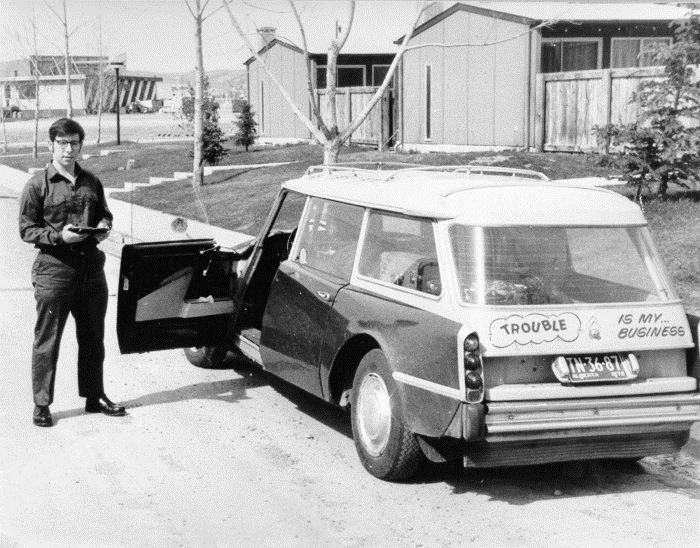 |
| Vibration troubleshooting in the early days |
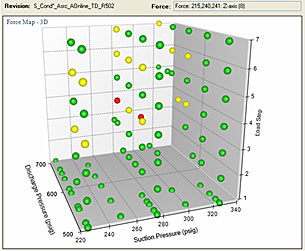 |
| 2007 DataMinerTM post processing tool |
2012-2014 Industry funded research for the Gas Machinery Research Council (GMRC). See above for list of projects.
2013-2014 In 2013, BETA Vibration Absorber was developed for trial evaluation. Based on the success of field installations, a commercialized product was developed and released in 2014.
2011-2013 Developed DataMiner2TM program building on the original DataMiner™ post processing tool, first introduced in 2007. More points over the operating map can be accurately measured in a much shorter time, helping equipment operators and owners make better and more informed decisions.
2009 Pioneered the System Performance Model™ (SPM™) program in collaboration with
ACI Services, Inc. For the first time ever, owners and packagers are provided with crucial information about compressor performance across the whole operating map. This service evaluates different alternatives resulting in improved reliability, safety, and profitability. Originally geared to optimizing pipeline compressor stations, this service is also ideal for midstream, injection-withdrawal, and other larger compressor applications.
2008 Partnered with M2M Data Corporation (M2M) to develop Intelligent Machinery Service, or iMA™ asset management tool. This is a breakthrough new multi-tiered machinery diagnostic and optimization service, representing the most cost-effective, real-time monitoring, analysis, predictive maintenance, and optimization solution available. Among the benefits are increased throughput, optimized performance, lower cost of maintenance, and emissions monitoring.
2007 Introduced DataMiner™ post processing tool, an innovative method to "mine" valuable results across many different operating conditions, speeds, or designs. This tool enables our experts to optimize the compressor design resulting in lower horsepower losses (operating costs) and improved reliability. End users realize more efficient units and lower costs.
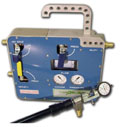 |
| 2006 B-ProbeTM inspection tool redeveloped with Dynalco |
2006 Re-developed the B Probe™ inspection tool in partnership with Dynalco for sale to the market. Has enhanced performance and capability and still the only non-intrusive inspection tool of its kind to evaluate the condition of power cylinders, wrist pins, and con rod bearings on spark-ignited and diesel engines. DynaProbe uses BETA's B-Probe technology.
2005 Release of MAPAK™ modeling program version 22 with enhanced modeling of meter error, dynamic pressure drop, time domain analysis and dual cylinder nozzle gas passages, compliant to API 618 5th Edition guidelines. Celebrated over 1900 acoustical analysis projects to minimize vibration problems on machine systems.
2004 Performed extensive speed trial at a premier Canadian paper mill, achieving new record speeds. Field capabilities enhanced with 80 channel data-capture instrumentation and unique data-mining software applications.
2002 Created the industry’s most comprehensive Finite Element Analysis (FEA) database for reciprocating gas compressor frames.
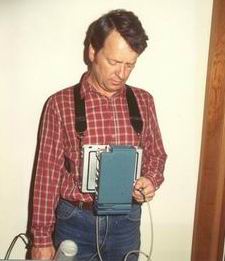 |
| 1986 RECIP-TRAPTM hand-held monitor |
1998 Introduced advanced acoustical modeling capabilities using Time Domain analysis – a leap in accuracy compared to other software modeling techniques.
(Note: Time Domain modeling was not available with commercial software)
1997 Developed and patented a Field Installable Choke Tube to allow for on-site control of excessive pulsation in a reciprocating compressor.
1996 Developed and applied to patent a Method for Measuring Engine Static Stiffness.
1994 Initiated research project into Time Domain acoustical modeling to deal with problems from a new class of compressors. Developed a compressor valve-modeling program to assess the impact of choosing different materials, lifts, and flow areas.
1992 Developed and patented a Spinner Nozzle Assembly for Cylinder Diagnosis.
1991 Developed a method of evaluating the performance of engine torsional dampers.
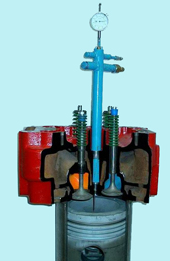 |
|
1986 B-ProbeTM
|
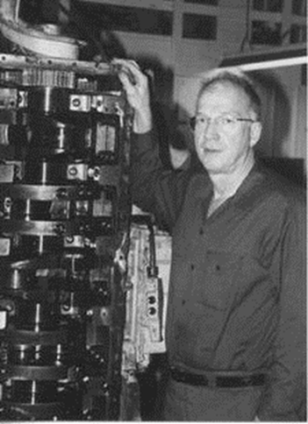 |
| Dave Schuh, co-founder of BETA |
Dave Schuh, founder of BETA
1989 Developed a machinery health evaluation system.
1986 Expanded our predictive maintenance service to include reciprocating equipment with the availability of the world’s first battery-operated, digital, hand-held reciprocating compressor monitor (RECIP-TRAP). Developed and patented B ProbeTM inspection tool, the world’s first non-intrusive inspection tool to evaluate the condition of power cylinders, wrist pins and con rod bearings.
1980 Provided Computerized Predictive Maintenance Program. BETA’s staff members do periodic checks on running machinery to identify potential problems. Developed DATA-TRAP™, the world’s first portable digital data collector for vibration. Founded BETA Monitors & Controls Ltd. to manufacture and market electronic instruments.
1978 Developed the world’s first Digital Peak Firing Pressure Indicator to balance engine cylinders. Developed a Torsional Vibration Analyzer.
1977 Developed and patented the Aquaprobe™ water-cooled engine pressure indicator probe. Prior to this device transducers in engine service had to be cooled with forced air.
1974 Developed a digital model for predicting pulsation and unbalanced forces in a reciprocating compressor. This computer simulation was the first of its kind in the world
1973 Initiated R&D to develop a digital model of reciprocating compressors and piping in order to predict and control pulsation. First company to use a digital computer to model acoustical natural frequencies of piping systems.
1972 First used Finite Element (FE) modeling to solve vibration problems.
1971 Serviced customers using the first spectrum analyzer available in Canada.
1967 Incorporated Beta Machinery Analysis. Provided engine and compressor analysis with the first commercially available engine compressor analyzer in Canada.



